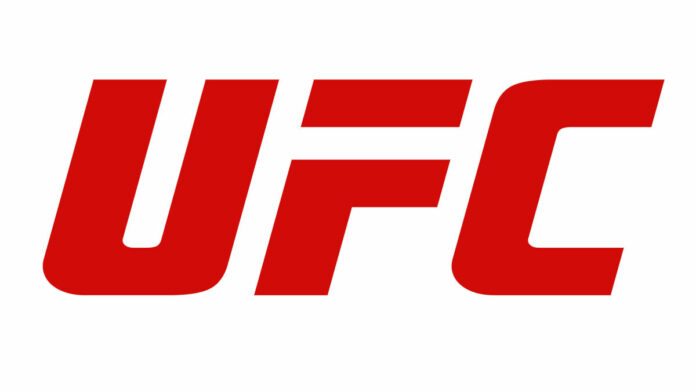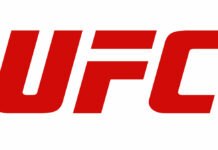
This weekend, the Ultimate Fighting Championship heads north of the boarder for UFC 289 at the Rogers Arena in Vancouver, British Columbia with a bout for the Women’s Bantamweight title set to headline the event. Unfortunately, as I’ve written throughout the first half of 2023 when I’ve covered UFC pay-per-views, the domino effect of the ESPN deal, which necessitates almost weekly fight cards to satisfy the contract that fuels the ESPN+ streaming platform, there are several pitfalls that eventually cause hurdles, both for fans and for the company itself.
First and arguably most importantly, the more fighters that are on a bloated roster, the more difficult it is for fans to follow all of the happenings within the organization and thus it becomes exponentially more difficult for the competitors to stand out from the pack, especially if a potential star-making performance is lost in the shuffle of countless fight cards on the streaming service. While it’s great that more fighters get a chance to make a full-time living in the fight game, the fight business is just that, a business and if a fighter just becomes a name on the page to cover a spot on the card, there’s not much promotional push for them. Without that spotlight and promotional push, the longevity of an athlete on the roster isn’t certain. If fighters are considered interchangeable like an assembly line, which is how most modern UFC undercards are booked, it actually minimizes their chance to have the notoriety that can be garnered from an impressive performance.
For the promotion, the problem that occurs with such a bloated roster that had to be signed to satisfy the ESPN deal is that obviously, the office has to find spots on the card so the talent can be paid. They can’t keep an athlete under a deal without some assurance that the contract will bring with it solid paydays. At the same time, because there are numerous fight cards and talent that have to be booked for them, it can leave some competitors unavailable if the organization needs a replacement. If an athlete just fought a month prior, they might have a medical suspension from the athletic commission to heal from any injuries that happened during the previous fight or they might simply not have the time to properly train for a major fight.
The latter is ultimately what happened to UFC 289, and instead of a trilogy fight with an intriguing backstory, which is a much better selling point for the hefty price tag to order the event on pay-per-view, the main event was probably reduced to a showcase contest for one of the most dominate fighters of the modern era.
Amanda Nunes put the world on notice when she stopped Ronda Rousey with nearly a dozen unanswered punches and sent her into retirement in late-2016. For nearly the past seven years, the Brazilian athlete used a combination of power and technique to bring a well-rounded skill set that was dangerous for opponents in any aspect of the fight. Just a few months before she pummeled Rousey, Nunes won the previously mentioned 135 LBS championship when she submitted Miesha Tate in the first round at UFC 200. Still, ahead of her December clash with Ronda that year, basically all of the promotional material was based around the return of “Rowdy” Ronda, who lost the title the previous year after a shocking head kick from Holly Holm. Rousey, who refused to do any media appearances to promote her comeback to the Octagon, was thought to be ready to reclaim the belt. Clearly, Rousey was unprepared, and the statement victory propelled Amanda Nunes as the best female fighter in the sport.
Over the next few years, 135 LBS championship added more gold when she knocked out Cris Cyborg in just 51 seconds to claim the Featherweight title, making her a double champion. The “Lioness” defended both belts, alternating between a pair of fights in each weight class before she would defend the other championship. Perhaps, the grind of the competition took its toll as Julianna Peña, an underdog challenger, submitted Nunes to win the Bantamweight belt in December of 2021. However, Nunes avenged the loss to reclaim the championship via unanimous decision in July of last year.
UFC 289 was originally slated to be headlined by the rubber match, and with the nature of the trilogy fight, it advertised the selling point that the only fighter to beat Nunes in almost a decade would get the chance to do it again. However, Peña suffered broken ribs in training last month, prompting the UFC to announce that Irene Aldana would be the replacement in the main event for Featherweight title. Aldana, who has an MMA record of 14-6, brings a two-fight win streak against rather undistinguished competition into the cage ahead of UFC 289. Her two highest-profile career fighters were both decision losses against Raquel Pennington and Holly Holm in 2019 and 2020 respectively.
Essentially, Aldana is a mid-card contender that can beat the lower-tier competition, but hasn’t been successful at a higher level. So, she’s getting a title shot because the UFC needs an opponent for Amanda Nunes more than anything else. Granted, anything can happen in MMA, which was proven when Peña upset Nunes for the title, but by nature, those scenarios are the exception, not the rule.
Is Amanda Nunes against a mid-card challenger worth the $79.99 it cost to order the show?
For the UFC, they have guaranteed money for the ESPN contract, but how it sells to the general public still has an impact on the company at some point. The co-main event of Charles Oliveira, who lost in his last fight for the vacant Lightweight title against Islam Makhachev at UFC 280 last October, will square off against Beneil Dariush, a grappler that will bring an eight-fight win streak into the Octagon. Former champion, Oliveira is definitely a skilled fighter, but after he missed fight in a title fight against Justin Gaethje, prompting the UFC to strip him of the title and then suffered a defeat in his chance to reclaim the title in the Makhachev fight so he doesn’t have much momentum ahead of this co-main event.
There’s nothing on the undercard that stands out from random names that you might find on a random fight night card or even the prelims of an event. Again, when there are numerous fight cards and the names get lost in the shuffle, the fighters just become interchangeable to put on the paper to get a full card.
Thankfully, next month’s international fight week pay-per-view has a stacked card with the Volkanovski/Rodríguez Featherweight title unification bout, a Brandon Moreno title defense, and Robert Whittaker on the card, as well as a Robbie Lawler fight on the prelims. However, it’s ironic that at a time when the UFC has more fighters on the roster than any other time in history, the argument could be made that the organization lacks depth in terms of star power.
I think there will a great performance from Amanda Nunes, but I’m not sure if the general public will pay $80 to watch it. The bigger story might be how the dynamics of the UFC and selling PPVs to its audience continue to evolve when the structure of the ESPN deal puts the vast majority of the MMA content behind a paywall, which is the opposite of the strategy that allowed for the surge in popularity several years ago.
What do you think? Share your thoughts, opinions, feedback, and anything else that was raised on Twitter @PWMania and Facebook.com/PWMania.
Until next week
-Jim LaMotta
E mail [email protected] | You can follow me on Instagram & Facebook @jimlamotta89







